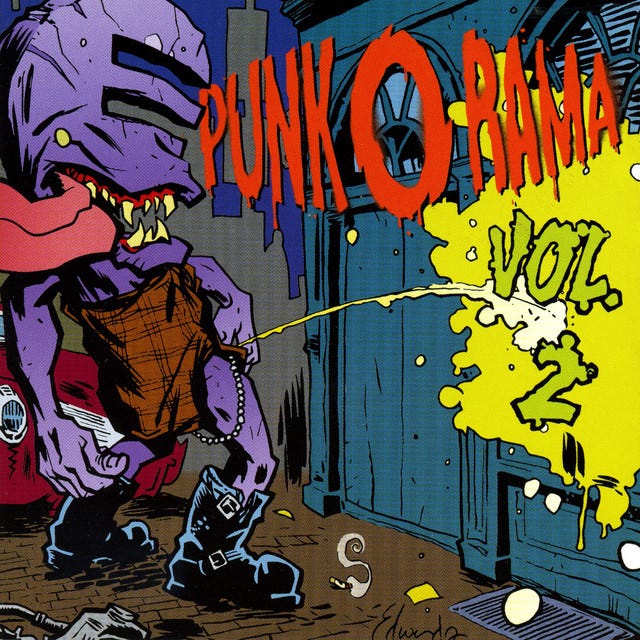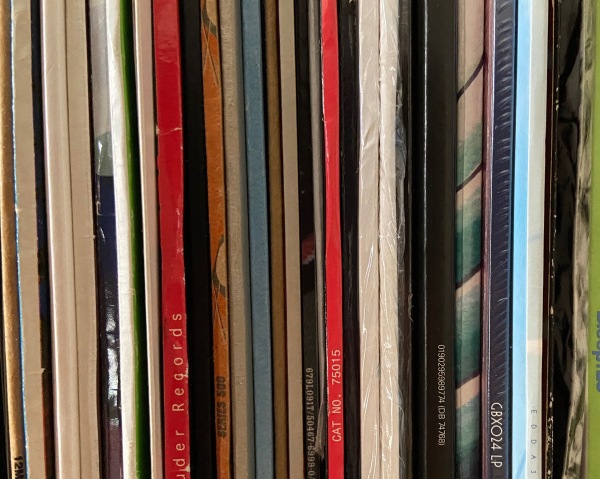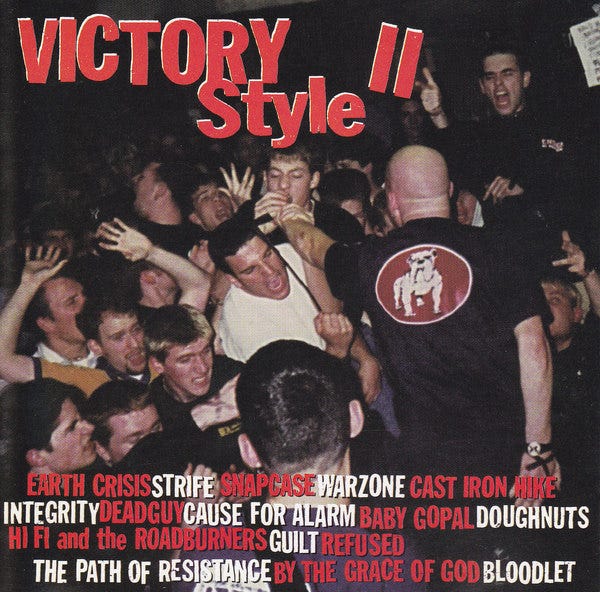My ten contributions to ACL’s 40 Best Compilation Albums (part one, part two)
Angola Soundtrack – The Unique Sound Of Luanda 1968-1976 (Analog Africa, 2010)
A friend passed me the three-volume Buda Musique compilations a few years before this came out, igniting a deep love for Angolan music. While I had some grounding in Brazilian music and knew a bit of African jazz and funk, genres which seem to make up the roots of much Angolan music, this music transcends shared rhythms and triads. So I was primed for the release of Analog Africa’s Angola Soundtrack, which is impeccably curated to present the best of the best, including pioneering artists Os Bongos, Africa Ritmos, Os Kiezos, and the truly exceptional David Zé. Recorded during Angola’s war of independence from Portuguese colonization and the first years of the subsequent decade’s long civil war, these songs largely eschew melancholy in favor of dance floor-ready celebration in the face of the trauma of war. While the more psychedelic 2013 follow-up might more readily appeal to our readers, Angola Soundtrack remains the best introduction to the music of this era.
Chain Reaction … Compiled (Chain Reaction, 1998)
Released five years into the existence of the defining minimal techno label’s decade-long run of genre-defining 12”s, These nine tracks compiled from vinyl, remastered and collected on one CD, serve as a document of the best of European minimal techno. Under the monikers Basic Channel, Rhythm & Sound, Maurizio, and others, Berlin-based production duo Mark Ernestus and Moritz Von Oswald transformed the sounds of Detroit techno with Jamaican dub techniques. Their labels were always shrouded in mystery preferring the attention fall on the music itself, so it’s fitting that this rare CD edition goes beyond the obvious classics. Porter Ricks and Monolake are the best known of the artists featured here, and deliver what are probably still the strongest cuts, but the lesser-remembered artists such as Vainqueur shine as well, often in varying permutations, solo outings or new duo combinations.
Kompilation (Kranky, 1998)
A simply foundational collection documenting the early years of Kranky, leading with Godspeed’s now classic “Dead Flag Blues.” The 14-track CD was designed to fill up the entire disc and was specially low-priced to introduce the European market to the genre-defying work being released by the venerable Chicago label. Much of the Kranky aesthetic, as much as one can speak of such a thing, was influenced by European artists (the now familiar stew of krautrock, free improv, psychedelia, etc etc) and connections with the UK, in particular, were crucial to the label’s early success. Labradford are conspicuously absent from this comp, but as the label’s first signing they had already established a reputation across the pond. Amongst perpetual favorites such as Stars of the Lid, Low, and Pan•American, Kompilation also features tracks from criminally underrated artists including Amp, Magnog, and Jessica Bailiff. Still a kaptivating listen nearly 25 years later.
Music From Saharan Cellphones (Sahel Sounds, 2010)
The compilation that put Sahel Sounds on the map made us think differently about the cellphone as a medium for music. For more than a decade digital music and peer-to-peer file sharing (and file selling) had been associated with the internet, but Christopher Kirkley’s collection of tracks from cellphone memory cards provided a window into a vibrant West African musical ecosystem with the mobile phone as ’all-purpose multimedia device.’ Looking back more than a decade later, with Mdou Moctar now a global guitar superstar, it is hard to believe that upon initial release, his group was identified only as unknown artists hailing from Niger. Sahel Sounds has since gone on to release stunning records from the likes of Wau Wau Collectif, Les Filles de Illighadad, and Luka Productions, but this is the record that started it all.
Ringtones (Touch, 2001)
Comprised of 99 tracks mostly under 10 seconds, this CD of 177 ringtones is something of a curiosity, firmly rooted in the early ’00s era mobile phone ringtone trend. At the time, personalized ringtones were emerging as a means of publicly announcing one’s taste as a means of distinction, but the options provided by the big corporations left a lot to be desired. Like Brian Eno designing the Windows 95 startup sound, the short duration of each ringtone presented the artists an opportunity for formal experimentation that remains intriguing today even as ringtones have largely faded from use. Participants include Oren Ambarchi, Evan Parker, Gen Ken Montgomery, CM von Hausswolf, Main, Mika Vainio, Ryoji Ikeda, Zbigniew Karkowski, as well as uncredited field recordings – but the tracks from lesser known artists are just as likely to captivate.
Road Kill Vol. 1-3 (Hit+Run, 2012-2016)
My personal path into electronic music was the result of exposure not only to IDM but also to hip-hop, though it took me some years to realize that this was the case. I was largely turned off by the electronic production of the post-sampling era, until I discovered El-P’s productions for DefJux, and of course the beat tapes of the late J Dilla. The so-called LA Beat Scene of the ‘00s exploded onto the global stage, as producers like Flying Lotus, Knxwledge, and Ras G rose to prominence after producers like Dilla and Madlib demonstrated that producers didn’t need an MC to shine. These Hit+Run compilations serve as an excellent document of the diversity of that scene, encompassing broken beat, bass, dubstep, and experimental approaches. Producers featured include Carlos Niño, Purple/Image, Kutmah, Dibia$e, Mono/poly, Jonwayne, Daedelus, J Rocc, Rhettmatic, Matthewdavid, Mndsgn, and many more.
RRR-1000 Lock Grooves (RRRecords, 2009)
Ron Lessard’s Lowell Massachusettes record store and label RRRecords has built an incomparable reputation since the 1980s as the source for American, European, and Japanese noise and experimental music. Even amongst this impressive catalogue, the Lock Groove series endures as a conceptual highwater mark. The RRR-100 7” (1993) established Lessard’s concept, while RRR-500 12” LP expanded to a remarkable 500 participants, a logistical challenge for the curator but also nearly impossible for the listener to locate a particular groove. And while that may be part of the appeal, with RRR-1000 Lessard invited 20 artists to contribute 50 nano-compositions each. Still exploiting the unique physical quirks of a medium, the additional grooves allow the artists to make a more complete artistic statement with their 1.8 seconds of sound. Each cover is hand-assembled, adding to the experience and making each record a unique work of art.
Song Of The Silent Land (Constellation, 2004)
Montreal’s revered Constellation Records quickly made a name for themselves in the late 1990s with the success of Godspeed You! Black Emperor, and later Toronto’s Do Make Say Think, two bands that owed a lot to the ‘post-rock’ sound emerging out of Chicago at the time. By the release of their second label compilation, Song Of The Silent Land, DMST had long since moved out of the shadow of Tortoise, and Godspeed had gone on indefinite hiatus the prior year. This comp then serves as proof that Constellation is and remains much more than its two biggest names, carving out a unique identity for the label and for the city of Montréal. In addition to DMST and Godspeed, Song features mostly rare and unreleased tracks from Silver Mt. Zion, Exhaust, Hangedup, Polmo Polpo, Black Ox Orkestar, and a personal favorite Fly Pan Am remix featuring Tim Hecker & Christof Migone.
UR Battlepak Vol. 1 (Underground Resistance, 2005)
The politically militant second-wave of Detroit techno is best represented by the sprawling anonymous collective Underground Resistance, founded by luminaries “Mad Mike” Banks, Jeff Mills, and Robert Hood. Longtime UR DJ Buzz Goree selected 16 tracks from the label’s catalogue for this compilation, designed especially for vinyl DJs. Each selection is just a minute long, however UR Battlepak Vol. 1 included two identical records so that DJs could loop and extend Buzz Goree’s edits, encouraging the development of traditional DJ skills. Most selections are credited to UR, as well as Mad Mike, Pervtech, Remote, and others. By 2005, many DJs had begun to switch over to CDJs or Serato, to mixed results. Battlepak attests to the continued relevance of vinyl to the culture of techno.
Warp20 (1989-2009) (Warp, 2009)
Warp’s legacy was already cemented by the release of this anniversary compilation, but the reminder was well-timed. After twenty years of releasing classics, Warp showed no signs of slowing down, demonstrating the label had long since transcended cliched tags like IDM. The likes of Boards of Canada, Autechre, Aphex Twin, and Squarepusher are well-represented, as are Broadcast, Seefeel, Battles, FlyLo, Mira Calix, Prefuse 73, and so many others. A simple compilation couldn’t serve as a sufficient tribute, but instead a mixed-format boxed set matched quality music with outstanding packaging. Warp20 includes unreleased tracks, fan selections, reinterpretations, locked groove loops, a 65-song mix CD, and a 192-page book detailing the label’s entire catalogue. While other labels had been less able to stay relevant, Warp managed to continue to diversify without chasing trends, and continues to release relevant and critically acclaimed music to this day. (Joseph Sannicandro)
ACL co-founder Jeremy Bye compiled our staff picks for the “The 40 Best Compilation Albums of All Time.” This was really fun to put together, both making my own list, but especially seeing what my colleagues thought to include as their picks. What makes a great compilation anyway? Of course, the answer to this is going to be somewhat subjective, and Jeremy identifies a number of different categories that speak to the spirit that animates ACL.

In going through the process of compiling my favorites, however, there were a number of personally important compilations that just didn’t feel appropriate for ACL. That said, we all have to start somewhere, and hopefully these off the cuff reflections may be of interests to readers of this newsletter.
I certainly didn’t grow up listening to John Cage and Morton Feldman. I had never heard to Stockhausen until after 9/11. My earliest musical memories was making my parents put Bon Jovi or Michael Jackson on the turntable again. (It was the late 1980s…) Like many kids of my generation, I bought Green Day’s Dookie and The Offspring’s Smash in 1994, when I was ten years old. I didn’t have money then and my family was never very well off, so I acquired new CDs very slowly in those days. Then in 1997, I bought a copy of Epitaph Records Punk O Rama Vol. 2. I’m pretty certain this was the first label sampler I ever came across, and in a very serious way it changed my life and influenced how I continue to discover new music to this day. I honestly can’t remember what drew me to it, but it may very well have just been the artwork. I doubt very much that I was aware then that this was the same label who released Smash, but maybe I was. I must have seen Rancid’s video for “Ruby Soho” by that point, but I don’t think any of the other bands on here would have rung any bells. I still remember the feeling of hearing Descendants, Pennywise, Pulley, Millencolin, NOFX, and Bad Religion for the first time, and more than any other single experience, listening to Punk O Rama Vol. 2 changed the course of my life for the next few years.
It also matters that this was the second volume. There was more to go back and discover, all these bands with histories stretching back a decade or more, so many records to discover that would lead to other bands and other records. I can only compare it to randomly picking up a comic book on a spinner rack at the drugstore or the newstand; there’s this disorientation that happens, but it is exciting because that small glimpse of a larger world leaves you wanting more.
By 1998, I was an angsty eighth grader and was primed for hardcore. Pop punk was beginning to lose my interest, and groups like Pennywise and Bad Religion had instilled in me some expectation of politics from punk that seemed foreign to groups like Blink 182 and MxPx. And so somehow Chicago’s Victory Records found me the same as Epitaph, and in fact there was a direct connection. Epitaph released Refused’s magnum opus, The Shape of Punk to Come in the fall of 1998, which I bought immediately after hearing “Summer Holidays vs Punk Routine” on Punk O Rama Vol. 4 in June 1999. But then I learned that Refused had broken up mid tour the previous year, sending me digging for their earlier records. I suspect that’s what brought Victory Style II to me, though I may be misremembering, maybe I heard this first and that tipped me off to Refused’s record on Epitaph. In any case, Refused was probably the first band I had to search for to find their records, to mail order their old CDs, to scrape the then-relatively sparse Internet for any and all information about this band from Umeå, Sweden.
Besides Refused, that Victory compilation introduced me to Earth Crisis, Strife, Snapcase, and Integrity. Going to see such groups was a revelation, especially Snapcase. Earth Crisis’ militancy was interesting but ultimately didn’t appeal to me, while Snapcase seemed to suggest a way to make heavy music that eschewed tough guy posturing and mindless aggression. It was at hardcore shows that I got introduced to contemporary political struggles, from fights against police brutality to environmentalism and animal rights. Victory’s aesthetic would shift over the years, and I was there for a lot of it, from seeing Boysetsfire and Thursday in a New Jersey firehouse in the summer of 2000 up to Taking Back Sunday headlining massive venues just a few short years later.
Right, so we’re rather far from the ACL aesthetic, but I can still see an important throughline. The experimentation that Refused displayed on The Shape of Punk to Come made a lasting impression, and I continued to hunt for new and surprising sounds after that, even when it led to genres I may not have anticipated. But style aside, sampling a label’s catalogue remains one of my tried and true methods of discovering new music. And that all began with my first compilation.

